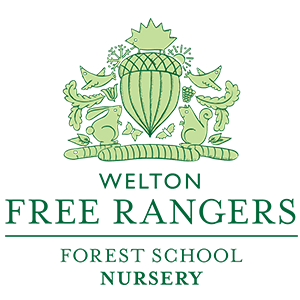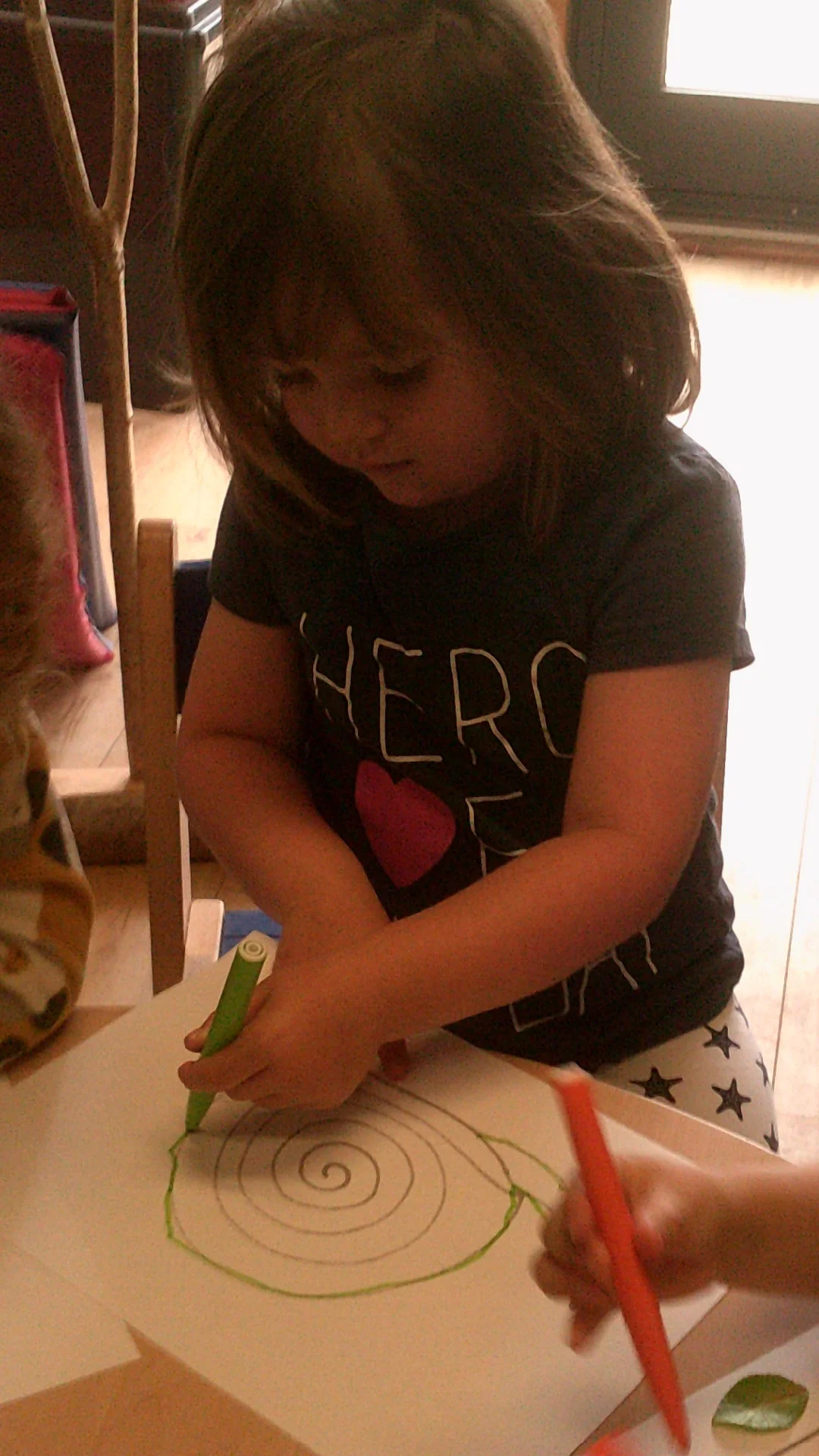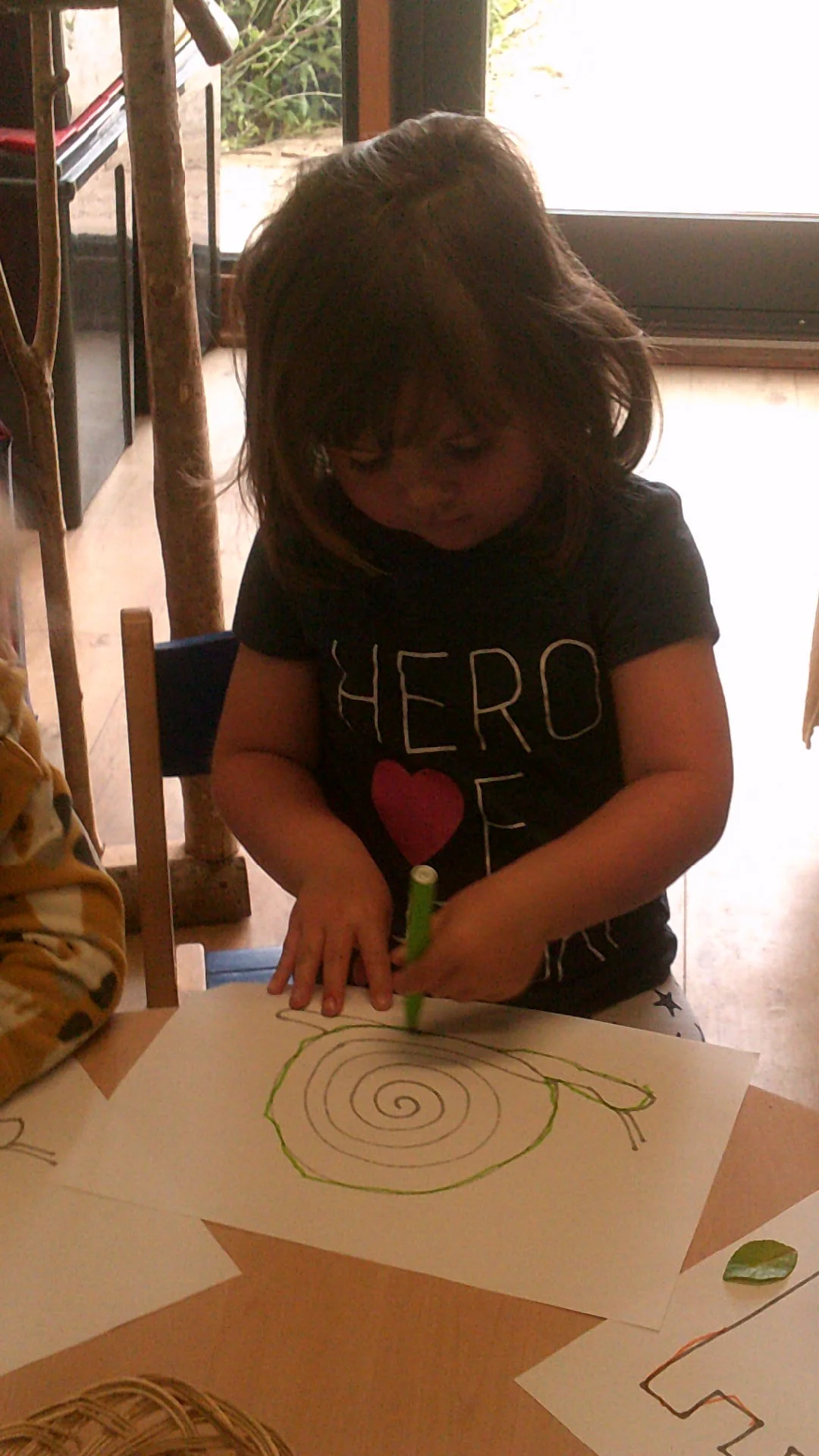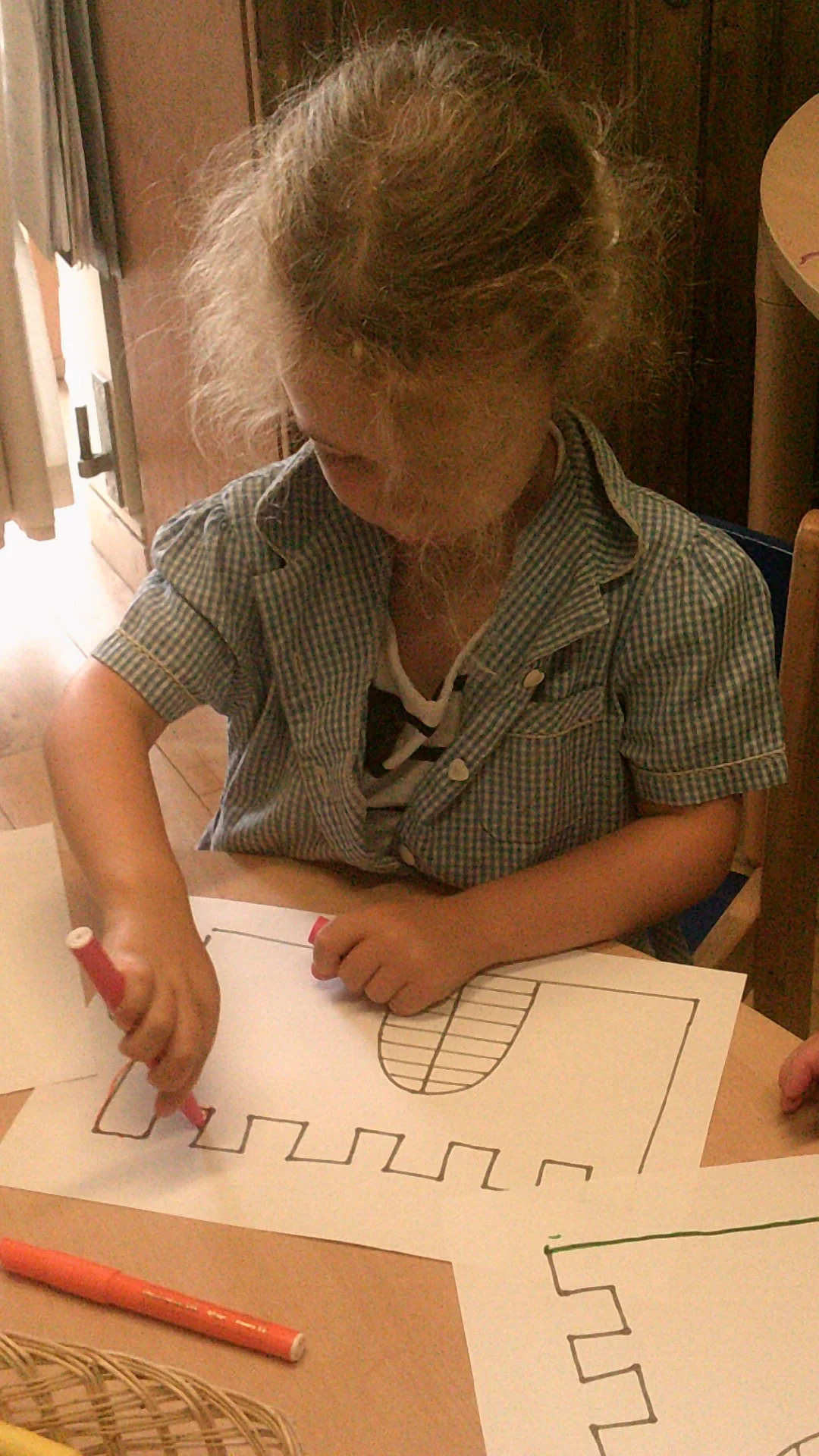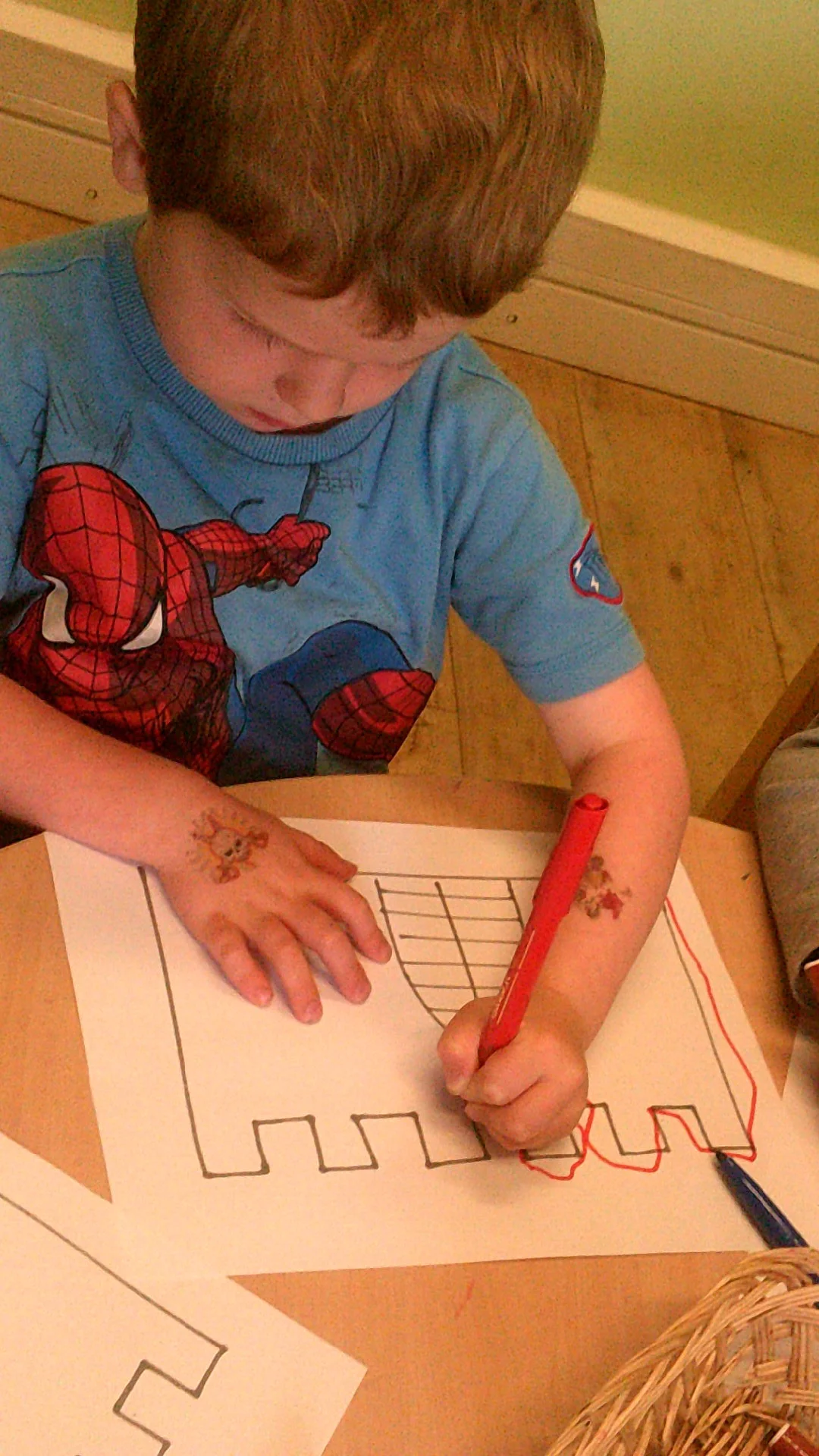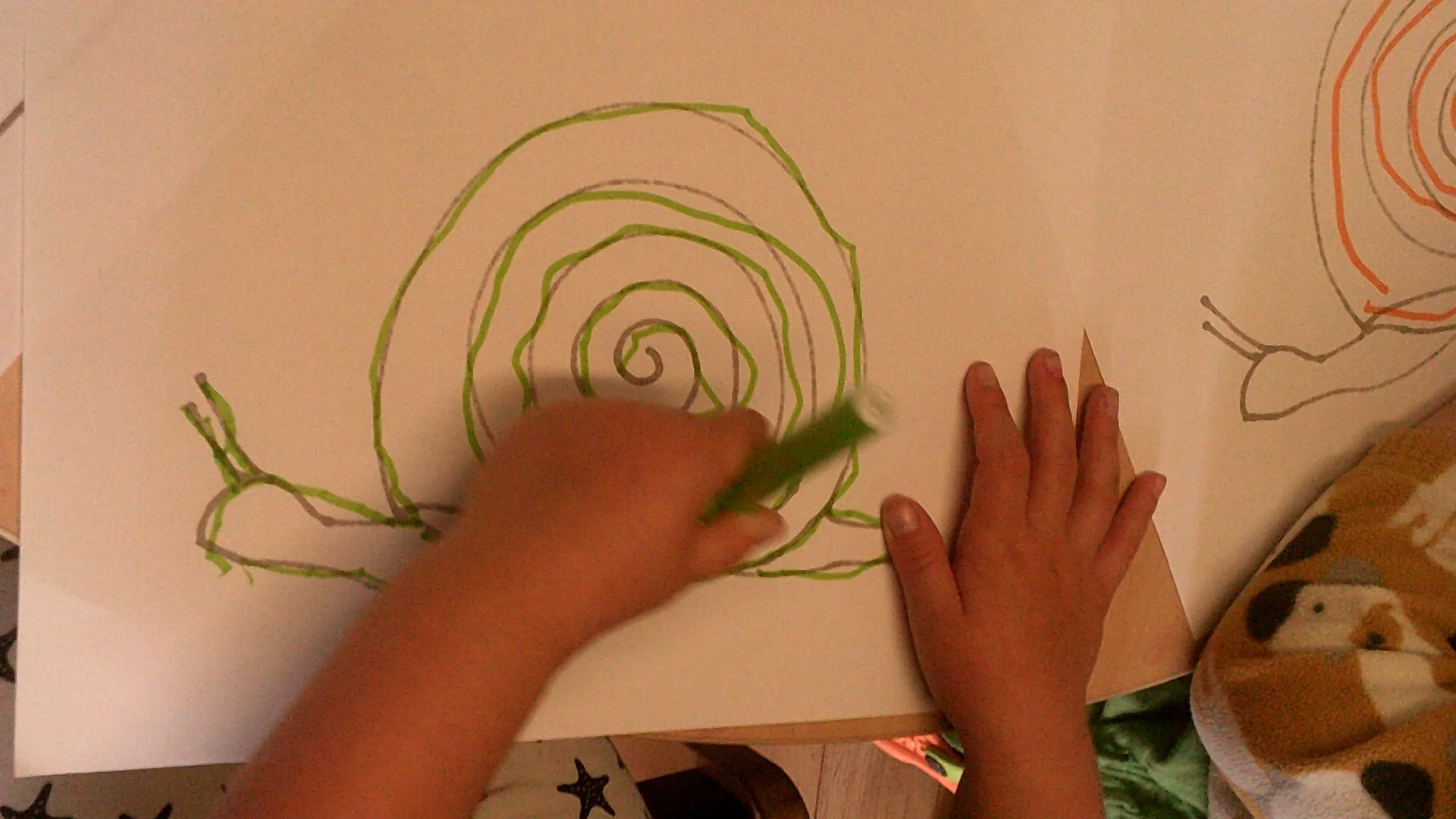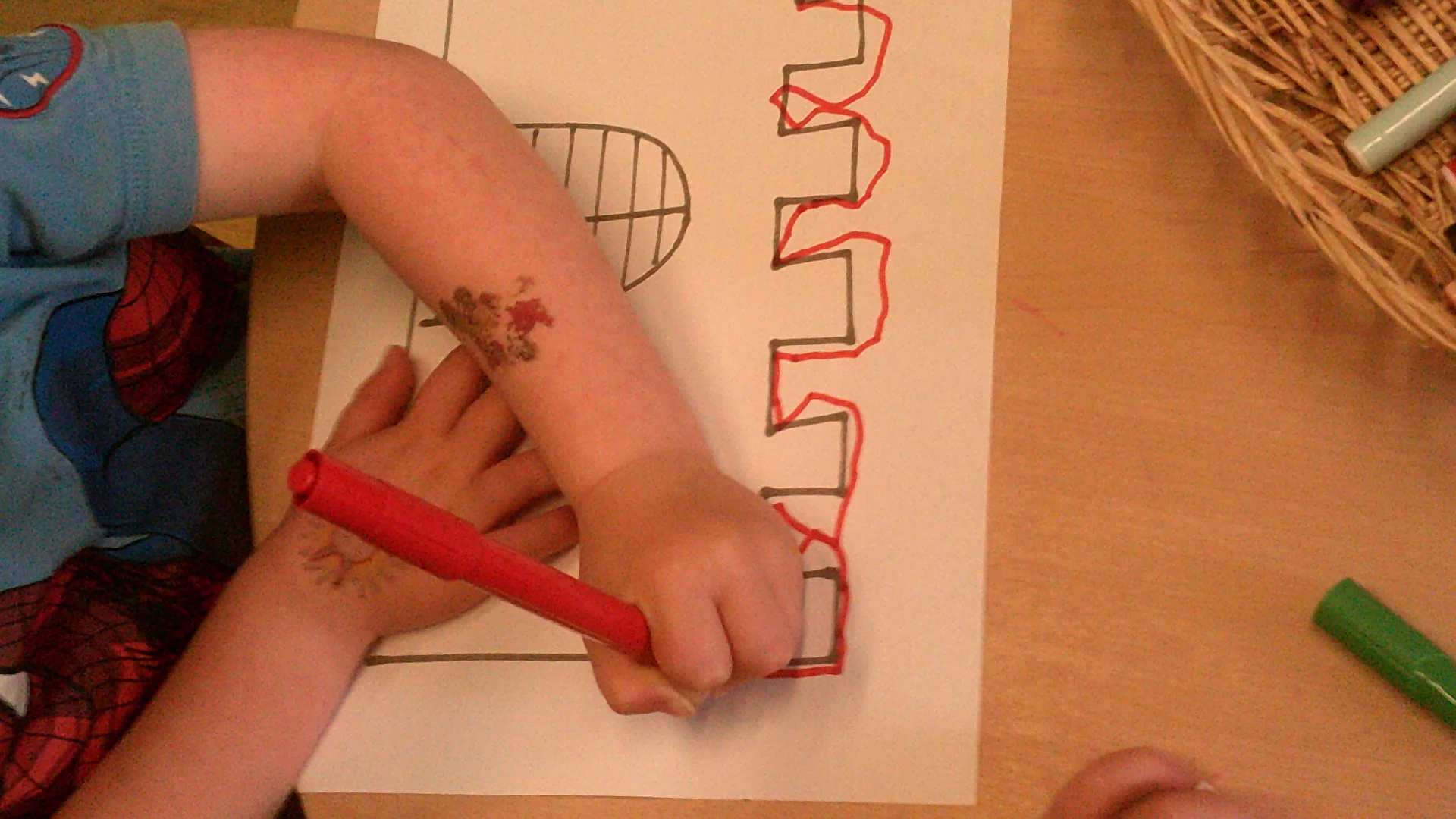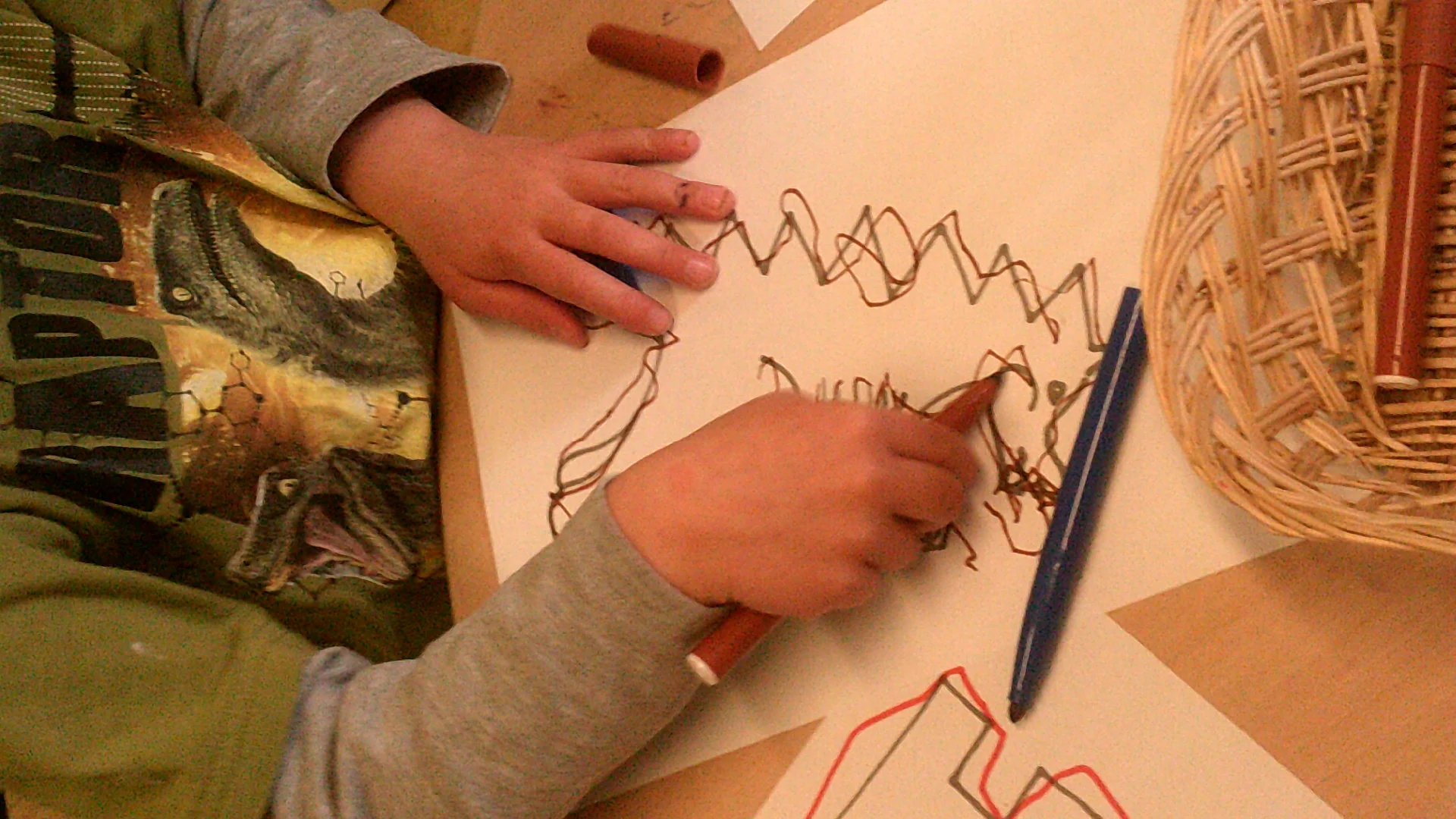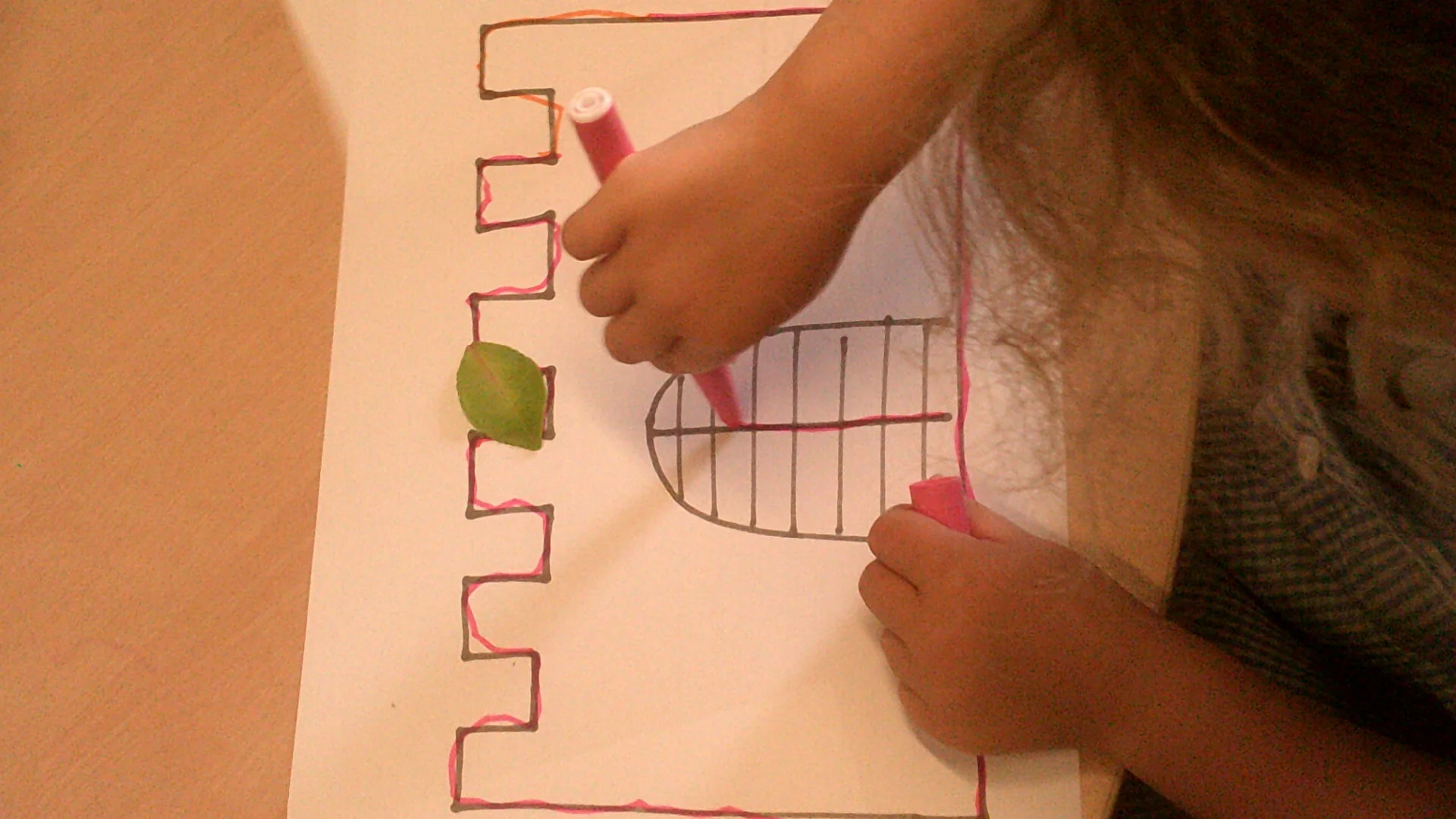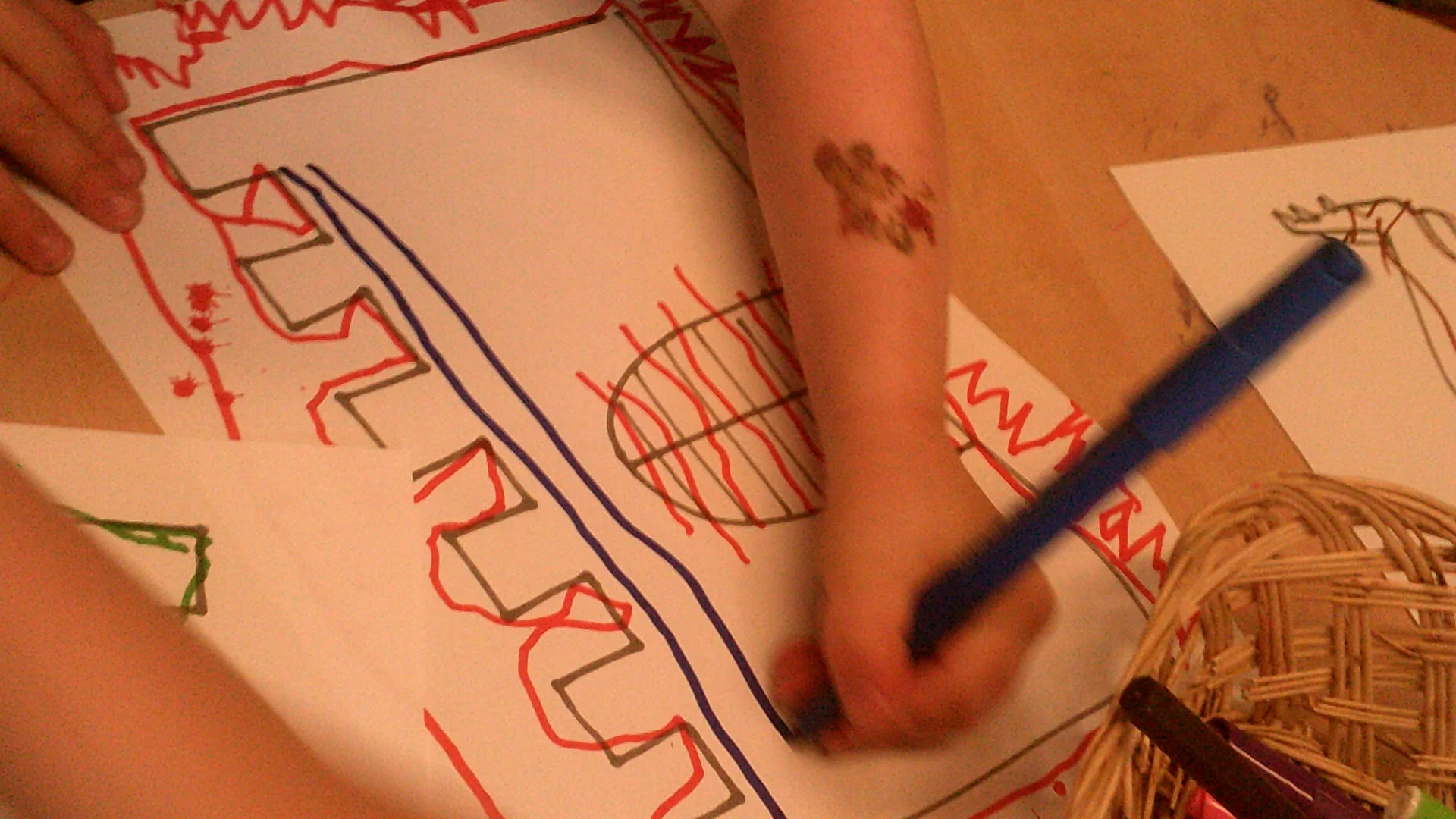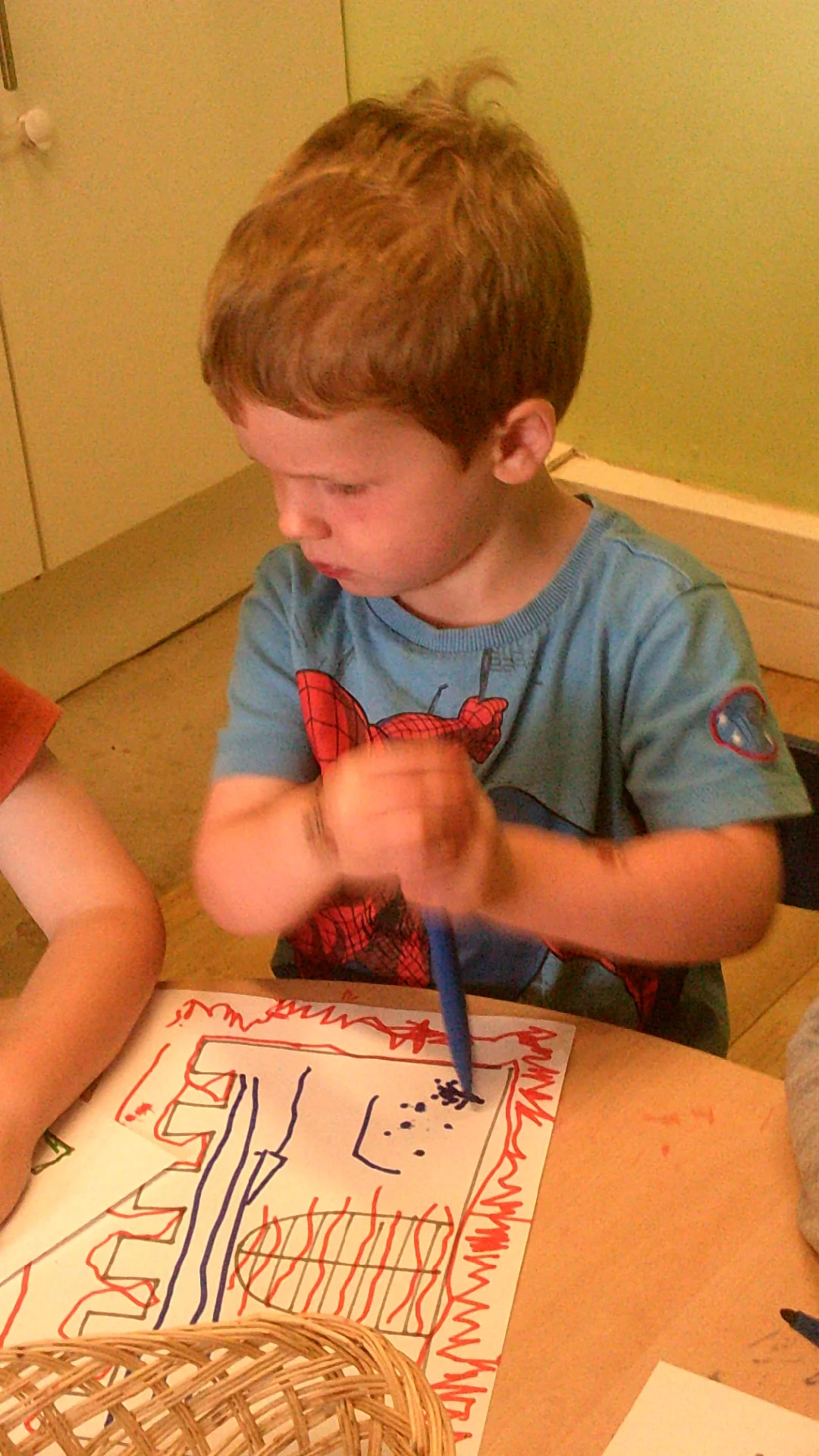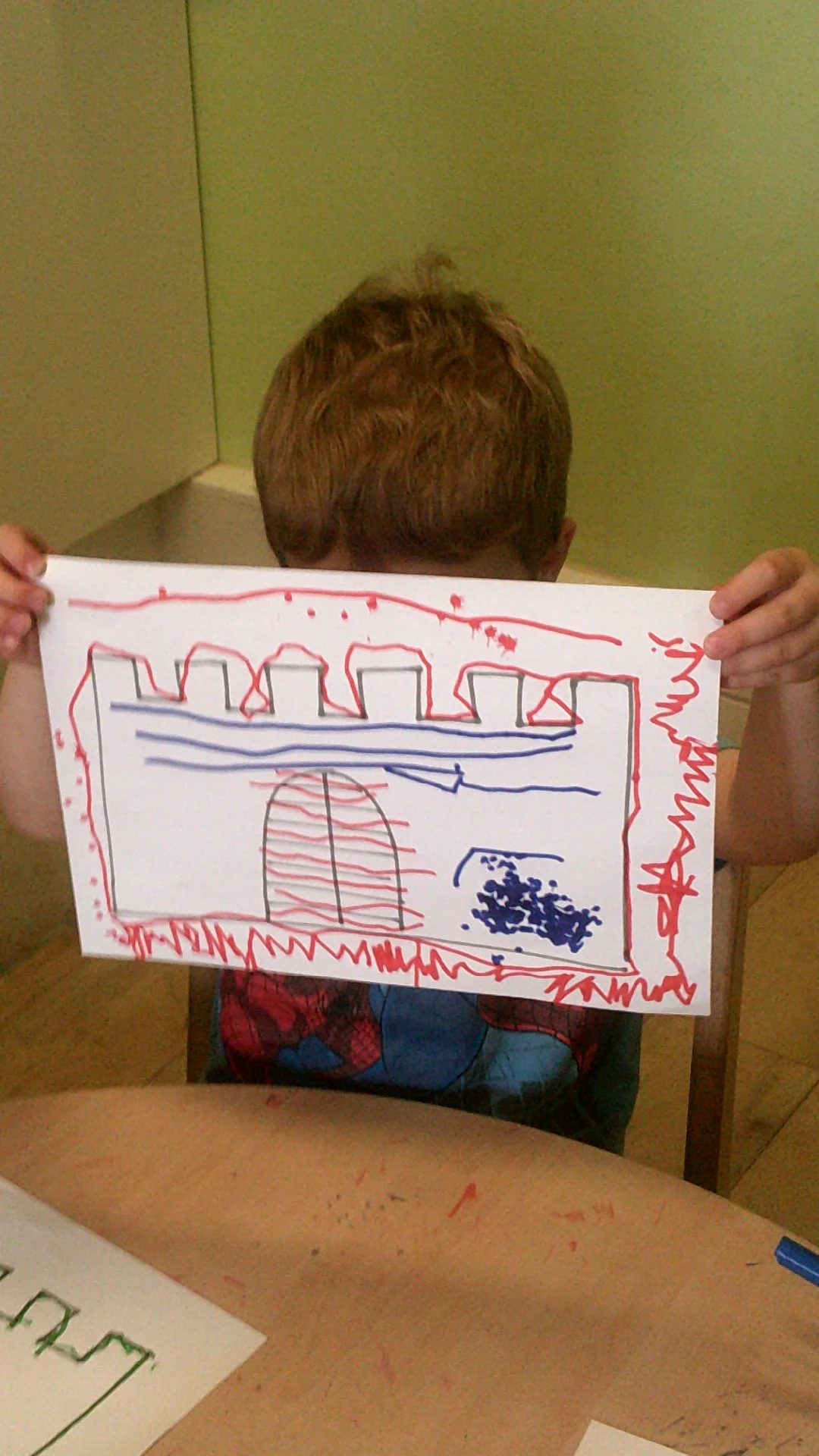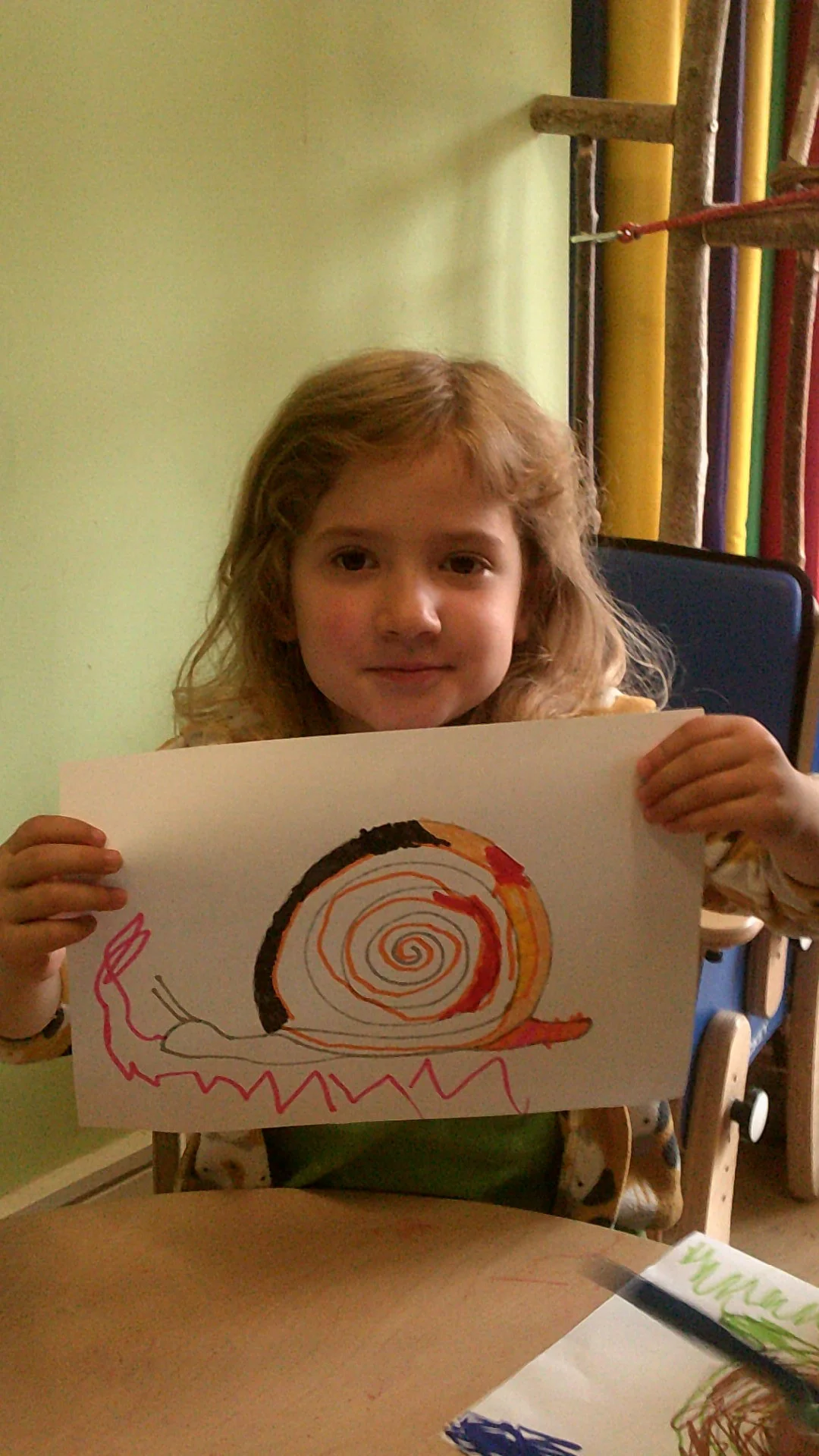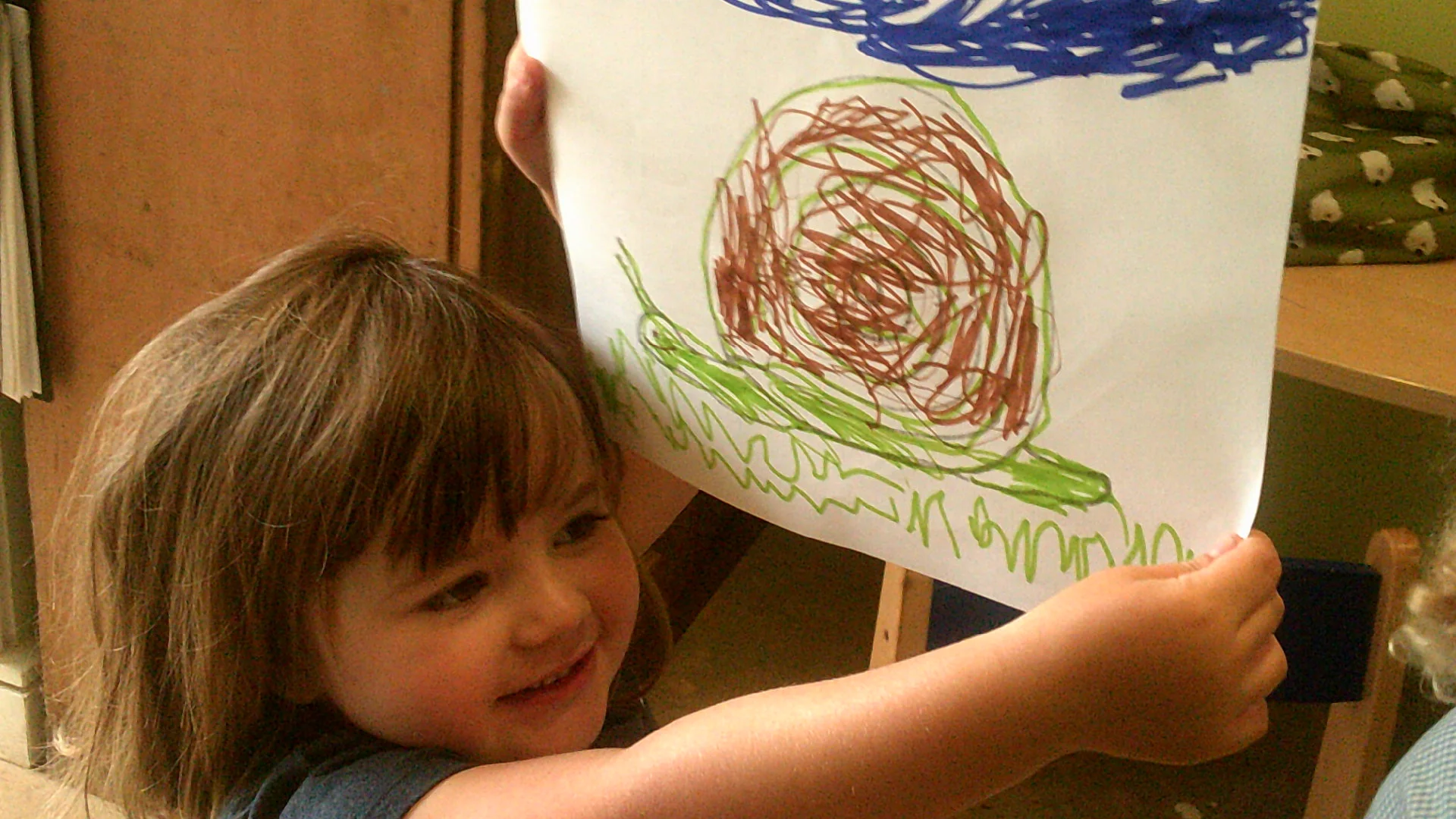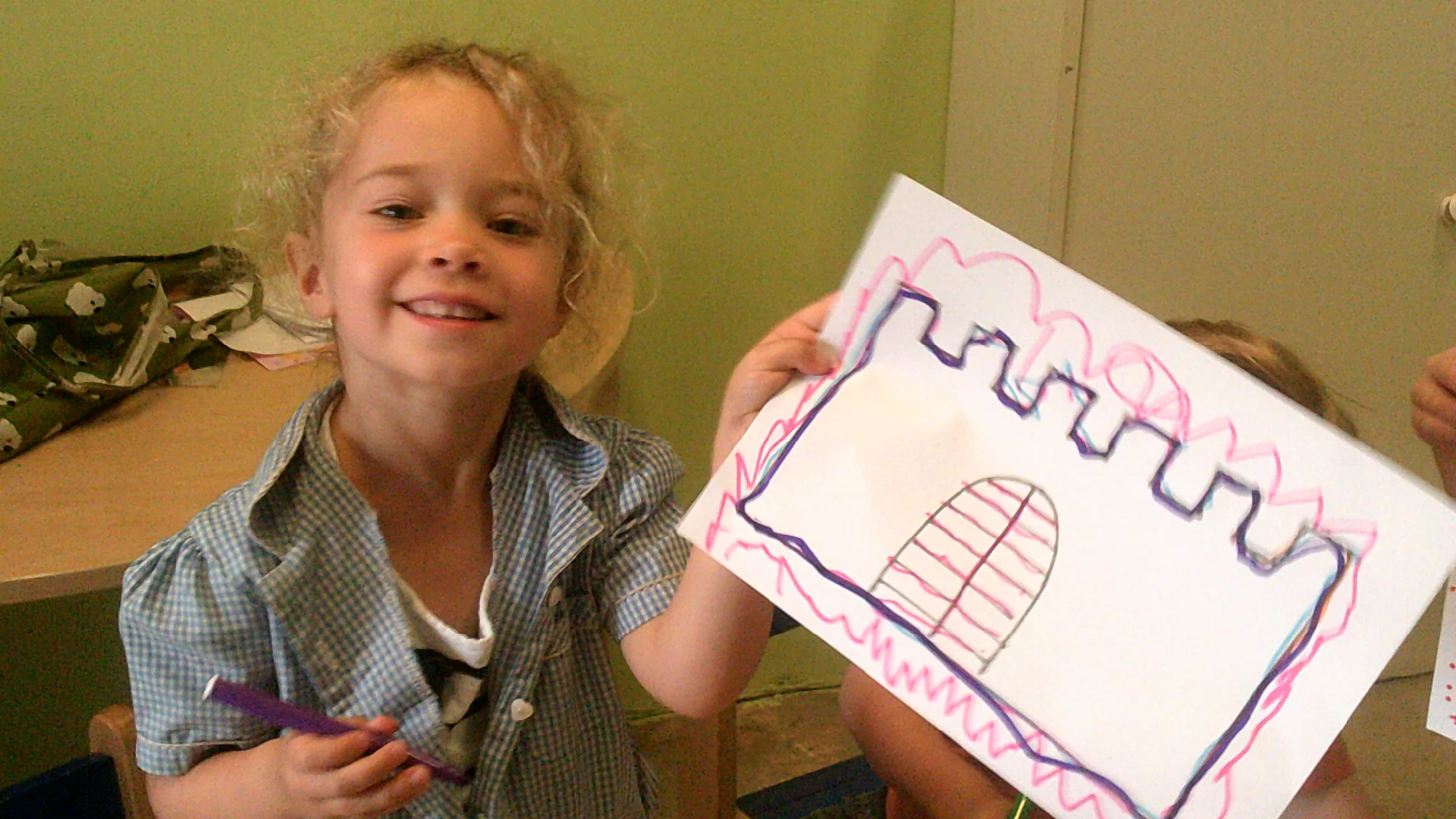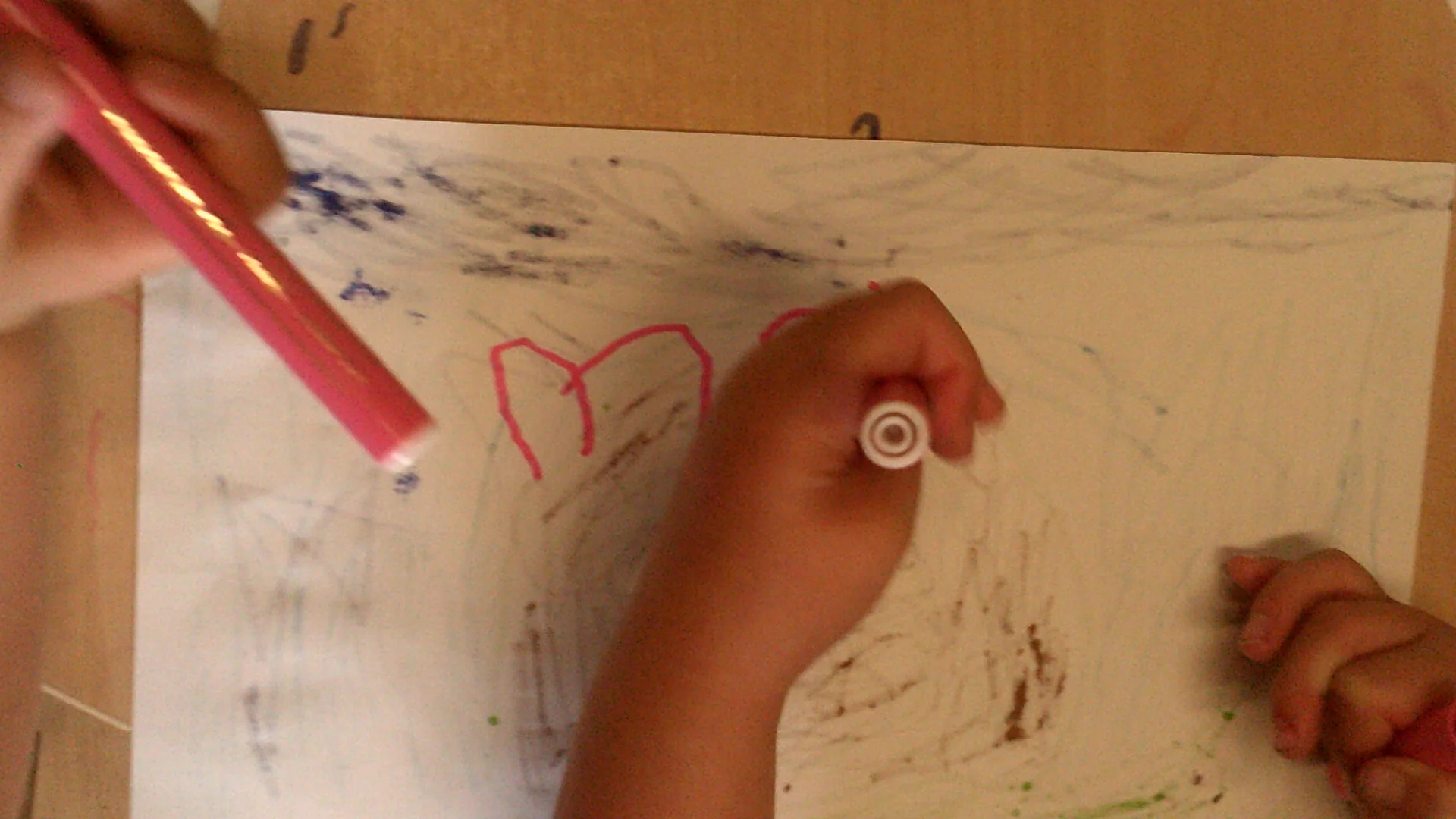At Free Rangers we value and celebrate mark making which is explored in all areas of play. Children often notice and marvel at the marks they make, looking at their footprints, using rakes and impliments to make marks in the sand, dragging them to make lines and curves. The water play explores cause and effect with children painting with water seeing the darker marks this makes on the surfaces they come into contact with and then the magic of evaporation! Messy play activities can facilitate mark making with hand and footprints, using tools to create marks, cars to leave tracks. The weather and environment are used with bikes leaving marks on the ground or using the balls to splat marks on the path. Music can also be used with children making marks to music and enjoying the physical enjoyment of the activity, fast music makes zig zags and frantic shapes while calmer slower tempo music makes gentle curves and lines.
The feel of the bumpy chalk on the concrete path, sliding pens on the white board, fly swot painting or glue trickling onto paper or oozing through their fingers. Children often have no interest in an end product at all; the physical activity is an end in itself and an opportunity for them to experiment and explore with their senses, developing confidence and dexterity through the process. At other times children may take delight in using their mark making to tell stories and express their feelings through pictures and symbols of increasing sophistication. They may decide that their mark making only tells half the story and choose to provide a full narrative which they invite the practitioner to ‘scribe’.
Children realise that marks can be used symbolically to carry meaning, in much the same way as the spoken word and begin to use marks as tools to make their thinking visible. Role play builders use chalk to make plans and pirates make their treasure maps resulting in an 'X' marks the spot! As children develop their mark making skills from lines and curves to enclosed shapes with features they can realise that marks can be used to relay information noticing letters and numbers in the environment and creating these themselves giving their marks meaning. Mark making oportunities are EVERYWHERE! Recently we have looked at patterns in nature, the spiral of the snail shell and the symmetry of the butterfly. During free play children have shown an interest in imaginary play, following their interests the colouring in sheets at the craft area reflect this and allow children to trace and explore patterns have a imaginary play theme.
Children develop the strength in their hands to manipulate mark making tools and equipment. There are different types of grip starting with a whole hand or palma grip. With increased control usually the grip develops to a five finger grip and by the age of 6 usually a three finger or tripod grip.
As children's mark making develops it is empowering when children can make their own mark for their name. Often comparing their work with others children need to be given the time to develop at their pace. Different stages in mark making show as lines, horizontally and vertically and curves to symbols and recogniseable letters.
Children make marks for many different reasons and that development along this journey is complex, depending as much on confidence, motivation and dispositions as on their physical skills or ability. Making these activities enjoyable to get their interest and allow children time to build their confidence and develop these skills will see them participating in mark making activities and that is the key!
Tam
